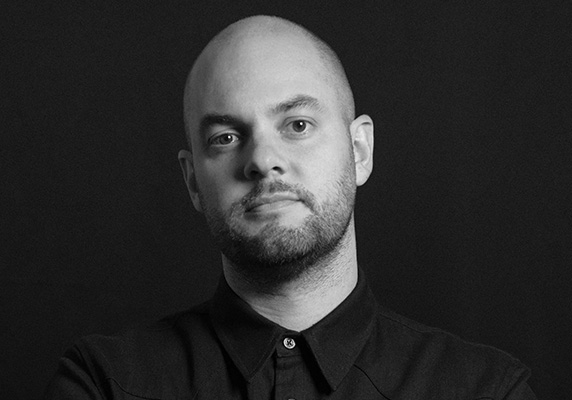Changes to laws around royalties are starting to make life in the music industry more profitable for music publishers, and for the artists who created the music.
A landmark ruling by the US Copyright Royalty Board required Spotify to pay higher royalties to artists, labels and publishers dating back to 2018. What are the ramifications for the music and technology industries, including music publishers, and the potential consequences for music consumers?
LSJ addressed this question to Rob Glass, a Partner at Media Arts Lawyers and a music publishing legal expert. We asked whether Spotify and other music streaming platforms will increase the cost of using their platforms, and whether this ruling will embolden artists and publishers to seek further increases.
Glass has been with Media Arts Lawyers in Sydney since 2014, beginning as a Senior Lawyer before becoming a Partner in July 2021.
With nearly 20 years of experience working in the music industry, he advises some of Australia’s leading DJs, producers, managers, labels and event organisers in drafting and negotiating deals.

On 31 May the Copyright Royalty Board in the US issued a written determination (the “Initial Determination After Remand”), upholding the call for a mechanical royalty rate rise across the five years between 2018 and 2022.
Glass explains: “Mechanical royalties are the royalties paid to the owner of the copyright in the song in return for a licence to include that song on a record. ‘Mechanicals’, as the industry refers to them, are the largest and most important source of income for songwriters and publishers.”
The determination on the mechanical royalty rate rise has come after a lengthy process in which the Copyright Royalty Board determined that songwriter/publisher royalty rates for streaming would rise significantly in the US in 2019. The CRB decided to adjust the increase from 10.5 per cent to 15.1 per cent across the five years between 2018 and 2022.
In response, Spotify and other music streaming companies, including Amazon and Google/Alphabet (but not Apple) launched a legal appeal against the new rates, arguing they were unjustified. The irony is that these streaming services are reliant on artists and publishers to have any content at all. The US-based National Music Publishers Association intends to argue for a greater increase – 20 per cent – for the next four-year period, with negotiations expected to begin in September this year.
The music publisher’s role
Glass says audio consumers will feel the consequences, but to what degree is unclear.
“If we look at Spotify as an example, it’s worth noting that there have not been many increases, save for multi-user bundles like its “Family Plan” (increased in the UK and US in the last 18 months) and individual tariffs in smaller markets … Bloomberg has recently reported that Spotify plans to introduce a ‘Supremium’ tier, including HIFI audio, and expanded access to audiobooks. This new tier is expected to have a corresponding price increase.”
Glass explains the music publisher’s role: “Music publishing, or music law generally, is an amalgamation of commercial, contract and intellectual property law, but also requires a detailed knowledge of the music business and the key players running it – both here and abroad.”
Knowledge of the market and the deals and terms on offer is vital, says Glass.
“You can only get that knowledge by being across a high volume of transactions. In just the past ten years, there has been a significant shift in US deals, which were predominantly life of copyright or co-publishing deals, but now even the majors (Sony, Warner Chappell, Universal) all have copyright reversion clauses. Of course, you need to stay on top of changes to the law, regulations, and the endless acquisitions of the stakeholders running the business.”
Music publishers typically administer, promote, exploit and protect an artist’s catalogue of songs globally. The two key revenue streams for music publishers are mechanical royalties, and performance royalties – royalties earned from the public performance of the songs.
Music publishers typically administer, promote, exploit and protect an artist’s catalogue of songs globally. The two key revenue streams for music publishers are mechanical royalties, and performance royalties – royalties earned from the public performance of the songs.
Any time a song is played on the radio, in a retail store, or on a video game soundtrack, revenue is being generated for music publishers and collected by a publisher on behalf of an artist.
The traditional publisher/songwriter revenue split is 50/50. The songwriter’s share has become known as “the writer’s share,” and the publisher’s half has become known as “the publisher’s share.”
The major players in the US also predominate in the Australian market: the publishing companies are led by the three majors, Sony, Universal and Warner, and the streaming businesses are fronted by Amazon Music, YouTube (owned by Google/ Alphabet), Pandora (owned by SiriusXM/ Liberty Media) and the global market leader, Spotify.
To clarify, streaming royalties are divided two ways: approximately 75 to 80 per cent is split between the performing artist and a record label, while 20 to 25 per cent goes to publishing. This composition of royalties has remained largely unchanged since the days when vinyl records and CDs ruled the market – often priced at $18 to $30, which results in reasonable profits to the artist and publisher. Streaming, however, reaps a significantly smaller reward. When a user plays a song on Spotify, the artist receives 70 per cent of a total of between three-tenths of a cent and half a cent, with 30 per cent going to Spotify.
A major win
In the US, the compulsory mechanical licence royalty rate is set by the CRB, and as a result of the recent CRB ruling that royalty rate increased from 10.5 per cent to 15.1 per cent (a total increase of 44 per cent over 5 years), with a corresponding increase to something called the Total Content Cost to 26.2 per cent.
Glass says, “Without going into the painful mechanics of how this licence operates, it is clear that this increase is a major win for songwriters and publishers. As to the effect on the Australian market, the deals cut between the DSPs – direct service providers, that is, Spotify, Apple, Tidal – and the publishers and collection societies are confidential, but the CRB ruling will undoubtedly result in pressure on the DSPs and labels to increase mechanicals paid to songwriters and publishers.”
He adds, “These days, the majority of music consumption is online via DSPs like Spotify, Apple Music, Amazon, which means the majority of ‘mechanicals’ are paid directly by the DSPs (on behalf of the record labels) to either the major publishers or one of the territory specific collection societies – that’s APRA or AMCOS in Australia. So, each time a song is streamed or downloaded, that ‘retailer’ pays mechanical royalties (on behalf of the record label) to the publisher or collection society, who then remit that payment to the songwriter.”
On an upward trend
The music publishing market was valued at $5.7 billion USD in 2022, according to the Global Music Publishing Market Report 2023. In Australia, the Australian Music Publishers Association, AMPAL, conducted a survey of its members in 2021, which valued the Australian and New Zealand music publishing industry at just over $AUD320 million, Glass says.
“That survey was of music publishing companies [only] and did not include royalties paid directly to songwriters and composers. So, the market may have been worth more and is likely to be more still in 2023.”
“I’ve been obsessed with music and its inner workings my entire life, so being able to forge a career negotiating and procuring the deals that form the backbone of the business is something I never take for granted,” says Glass.
“As to the relatively recent embrace of the music business by Wall Street , there’s no doubt that in a short space of time, the world’s biggest investors poured billions of dollars into the music business and turned music royalty payments into a bona fide asset class. My firm has been involved in a number of these high-profile acquisitions. Whether the client chooses to sell their rights or not, the option to do so wouldn’t have existed had it not been for music streaming resuscitating the industry’s revenue. That said, with the cost of cash increasing, these deals have cooled a little. For example, Universal bought Bob Dylan’s publishing rights in 2020 – the figure was undisclosed but was estimated to be between $300 and $400 million. But the music business is certainly on an upward trend.”

![[image] speakers in a row to show music publishing](https://lsj.com.au/wp-content/uploads/2023/06/music-header-image.jpg)


